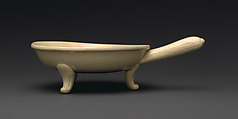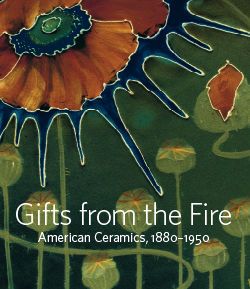Dish
Manufacturer Rookwood Pottery Company American
Not on view
Maria Long Nichols’ staff at Rookwood embarked on a commercially-motivated line of transfer-printed ceramics that could be mass produced, as opposed to the individually hand-painted vessels for which Rookwood was known. These were made for only a year, from 1880-81. This small footed dish is one of five examples of Rookwood’s printed ware known to have survived. The three crabs that decorate this functional ware, like the motifs on other examples in this printed series, were probably copied directly from Japanese prints. Also, the manner in which the crabs have been scattered across the surface apes the organizational pattern of the books by Hokusai and his pupils. The designs were engraved and printed on special paper, and then transferred to the cream-colored ceramic forms before firing. Clara Chipman Newton, one of Rookwood’s earliest employees, wrote in a holographic early history of Rookwood that the designs for this printed ware were “carefully selected from Japanese books.”
Rookwood’s work in this genre may have been equally inspired by examples made by French Japonistes, most notably the transfer-printed dinnerware of the Rousseau Service designed by the French artist Félix Bracquemond in 1867. Conveniently, examples of Bracquemond’s Japanese-inspired designs were shown at the Philadelphia Centennial.
This image cannot be enlarged, viewed at full screen, or downloaded.
This artwork is meant to be viewed from right to left. Scroll left to view more.




